Content planning doesn’t have to be complicated. Here are some practical tips for preparing content that drives new leads and sales for your business.
Attracting new customers to your business is a vital, ongoing activity.
But the first step in “attracting” is grabbing attention. The second step is nurturing that attention.
That’s what content marketing is for. Building relationships with your audiences.
Content marketing has proven to be one of the best ways to build a brand that repeatedly attracts new business. The basics involve creating and sharing information that educates or otherwise offers value to your target audience and encourages their trust in you.
But with so many different channels for content today, and so many types of content to choose from, knowing where to start can feel overwhelming.
Here is a strong, basic framework for planning your content well in advance, to help you and your team stay organized and be confident your content can attract the people you’re looking for.
We’ll talk about:
-
- What Is Content Planning?
-
- Why Is Content Planning Important For Small Businesses?
-
- 7 Steps to Creating a Successful Content Plan
-
- 7 Popular Tools For Content Planning
-
- Common Mistakes to Avoid When Content Planning
-
- The Next Step For Your Content Plan
What Is Content Planning?
Content planning is the process of putting strategy behind digital content that you post on a set schedule.
It’s more than just posting the content you like.
A lot more…
Effective content planning means developing content that benefits your target audience(s).
Yes, this requires research on multiple fronts. You must first answer these questions:
-
- Who is your audience?
-
- What content will your audience find compelling, and why?
-
- What are your competitors posting, and how do their posts perform?
-
- How will you make an offer within your content (calls to action or CTAs)?
Why Is Content Planning Important For Small Businesses?
Without a content plan, your marketing can easily lack focus and direction.
Why create content that doesn’t connect with the people you most need to reach or that doesn’t align with your business goals? That is a waste of time and money.
But with a content plan — well thought out and then well executed — your content strategy takes on intention – and will produce better results.
With a plan, you can better ensure that your content aligns with your goals (say, growing your followers online or generating more leads from organic traffic). And, organizing this function allows you to create measures and track analytics – and readily see which forms of content and which channels engage and interest your customers.
Today, the analytics behind most marketing software will tell you which days, times, and content types lead to the best results.
A content plan makes your strategy precise and keeps it organized. And if you share content across multiple media to different demographics of people, a content plan will make your life so much easier!
Whether sharing your blog posts or repurposing them as short-form captioned videos, structure keeps things organized.
8 Steps to Creating a Successful Content Plan

Here’s a 7-step plan to make content planning easier for you. You can take these steps each time you want to put together content for months at a time.
Define Your Goals
Start by defining your business goal(s).
What do you want to achieve with content marketing?
It could be more sales, leads, or followers that you can monetize in the future. Be sure to make the goal specific, with a deadline.
An excellent framework for goal-setting is the SMART goals formula – an acronym that stands for:
-
- Specific: Make your goal narrow and focused
-
- Measurable: Add numbers to your goal to help you track progress
-
- Attainable: Make sure you can reach this goal realistic and based on your schedule
-
- Relevant: Have your goal align with business objectives
-
- Time-based: Give a timeframe for reaching your goal
Identify Your Target Audience
Next, research the goals, pain points, and behavior of your target audiences. Are you talking to retail customers or corporations? Potential funders or existing shareholders? Perhaps you need to recruit some talent. Maybe all of the above, but at different times
Keeping top of mind who you’re talking to with each ommunication will help you create content that speaks directly to them, drives engagement, and even gets calls booked.
Speaking authentically also helps you stand out from the noisy crowd if you have many “competitors.” The only difference between them and you may be…you.
Do A Content Audit
If you already have posted content, do an audit. Get it reviewed and remove or revise anything that doesn’t square with your most important brand messages.
Consider what might need to be added based on your current goals or your evolving understanding of your target market.
Maybe your current content:
-
- Lacks a clear end-goal
-
- Doesn’t share as much value as it could
-
- Fails to stand out from the others in your field in terms of visuals or messaging
Regularly auditing your content helps you consistently improve its quality for better outcomes. (As content gurus constantly point out, improving older content can be just as good for your SEO as adding new content.)
Brainstorm New Content Ideas
After researching your audiences and auditing your existingcontent, brainstorm topics you’ll post in the coming weeks and months.
This is the fun part.
Here are different ways to come up with content:
-
- Create content based on feedback or questions from prospects or customers
-
- Plan out content that solves the various pain points of your ideal customer
-
- Generate ideas based on high keyword search volume in your industry. (An easy reference like AnswerthePublic.com gives you data from real questions real people are currently typing into search engines.)
-
- Focus on interests expressed by customers (It helps if you talk regularly with your customers!)
-
- Base some content on seasonal themes or during times of the year when your customer is most likely to seek information (e.g., tax season, gifting holidays)
-
- Elevate industry news that could help customers understand you and your products better
-
- Use a writing tool based on artificial intelligence to brainstorm relevant topics
Come up with several content topics you can schedule for an upcoming month — or quarter.
Finally, scheduling is most efficient with a content calendar. So let’s talk about it.
Develop A Content Calendar
It’s now time to “operationalize” your ideas – i.e., put them into action and schedule them on the calendar.
A formal content calendar is a must-have. You can use project management software for this purpose, but a simple spreadsheet can work just as well.
But why do you need a content calendar anyway?
A content calendar is a roadmap that gives a timeline for each post – from ideation to publishing.
It ensures the entire team stays organized and keeps everybody focused on the main goal (from step #1) – so you get there faster, together.
Here are some tips to help you create a content calendar:
-
- Choose where you’ll host your calendar – Use a simple spreadsheet or a project management tool. Or even a separate Google Calendar for your publishing.
-
- Pick what channels you’ll use. (Hint: where is your audience, mostly? If you speak to multiple audiences, you’ll probably need multiple channels.)
-
- Decide how often you have the capacity to publish new content. Think quality over quantity. (Depending on where you’re posting, there are best practices for how often to post.)
-
- Write your headlines. Base them on the topics you’ve decided your audience needs most.
-
- Fill your calendar. (This can all change. You’re not locked into anything.)
Make choices for each piece of content:
-
- Where will it get posted?
-
- What day and time will it get posted?
-
- Who will create each piece – text AND images?
-
- Who’s responsible for quality control?
-
- List keywords and key phrases where the team can find them for search engine optimization
Plan Your Visuals
If you have the capacity to use original photography, please do! You’ll be communicating more authentically, and you won’t have copyright issues — you’ll own the images.
For most small business owners, original photography is a luxury. Luckily there are tons of places to get high-quality royalty-free images today. Most of these have a a free option. These sites help photographers get visibility, and you’re free to hire them. But mostly they’re happy with attribution.
Create and Schedule Content in Bulk
Consider creating your content in bulk and scheduling it. Lots of business owners swear by this practice called time batching. Once your content is finalized, add it to your calendar and put it in “the can,” wherever that lives for you – perhaps in a Google Drive.
Monitor and Measure Results
As you post content, look at your metrics to see how each customer contact performs.
-
- How many visitors do your blog posts get?
-
- With social media, do your engagement metrics trend up ?
-
- Do you have better results on some platforms than on others?
Analytics objectively tell you what’s working and what’s not.
7 Popular Tools for Content Planning and Content Marketing
Here are popular marketing tools to make content creation and posting easier.
Hootsuite
Use Hootsuite to schedule social media posts across multiple channels and track the success of your posts, all from your Hootsuite dashboard.
Hootsuite offers a 30-day free trial to test the features before fully investing in it.
Trello
Trello is a project management app that can be used as a content calendar with the help of pipeline categories.
You move and sort your content ideas around a “board” for visual tracking of a project’s stages of completion, content type, platforms it will go on, and much more. Add deadline dates for each step up until the content goes live.
Trello is an excellent tool for small teams who still want a streamlined project management solution for their content planning.
Asana
Asana is another project management tool for planning and scheduling content in collaboration with teams. You can set tasks and due dates for each stage of projects and keep all your content strategists and creators on task and working together.
Asana also has an easily customized project management calendar that supports detailed content planning.
Google Keyword Planner
Google Keyword Planner is a tool for identifying popular keywords people are using for organic search.
Use keywords to optimize blog and website content to be indexed by search engines and more easily found by people seeking your services. Keywords help you attract more targeted traffic to your site.
Grammarly
Grammarly is an app that helps you improve the grammar and syntax of your written content. Run your blogs, for example, through the tool to catch errors and typos, and identify areas for improvement.
Grammarly is a great help to ensure professionalism and clarity in your written content. The paid plan includes a handy plagiarism-checking tool.
Canva
Canva is a helpful design tool for creating eye-catching visuals for content marketing. It comes with infographic and social media content templates. It’s easy to resize content being posted across platforms. Many content creators like its ease of use (including myself).
Use Canva to quickly design blog post banners, section images, and any visual enhancement you can think of to make your content stand out.
Common Mistakes to Avoid When Content Planning
Here are some common mistakes to avoid when content planning:
-
- Lack of focus – The last thing you want is to put out content that does not serve the reader with a clear focus. Without clear direction, your content marketing will lack impact and will most likely fail to achieve your goal.
-
- Not measuring results – Tracking and analyzing the success of your content, measuring each element makes it easier to know what works and what doesn’t, what to keep doing, and what to improve upon. Whether it’s knowing how much of your video your audiences watch or the open rates of your emails, looking at the data helps you adjust and fine-tune, getting you closer and closer to your ideal customer. Not putting in measures from the start of your project, putting you in a position to track results, is a common content planning mistake.
-
- Missing your target – If your content doesn’t “reach out and touch” the targeted audience, it won’t perform at the highest level. Fortunately, you can avoid this by cultivating a deep understanding of your audience and what can best serve them.
-
- Lack of creativity – Failing to innovate or take risks with your content marketing efforts can quickly lead to stale, uninteresting content. (We all struggle with this one!) When they feel you have nothing more to say, even fans of your products will stop reading your content after a while. Big mistake! You especially want to engage the people who already like you. So dig deep on content planning. Give them reasons to keep checking in.
The Next Step For Your Content Plan
The verdict is this:
Content planning is valuable in creating unique content that helps you reach your business goals.
Whether it’s more leads or stronger brand engagement, applying a content plan lets you assess at each stage whether everything you’re doing is paying off.
That’s why I enjoy helping people plan 90 days of content in a focused group setting each quarter.
I call this my “Content Planning Mastermind.”
If you join us, you’ll leave with a road map for what to post, why, where, and when to post each quarter.
And the best part is that everyone can collaborate and bounce ideas off one another.
If you’d like to join my mastermind, contact me here and I’ll add you to the waitlist!












